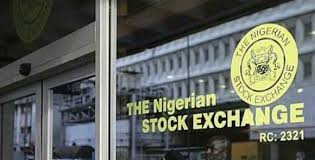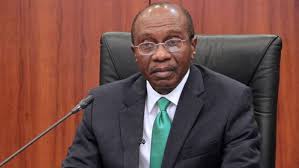Q4 2020 – Growth Expectations Remain Gloomy for Nigerian Economy

Report Summary
The Macroeconomy
- Growth expectations for the Nigeria economy remains gloomy.
- Headline inflation inched up further, on the back of an uptick in the food subindex.
- The Naira depreciated at the l&E FX Window.
- The Manufacturing PMI slipped back info the contractionary region.
The Financial Markets
- The equity market gained 50.05% in the fourth quarter of 2020.
- The fixed income market reversed its bullish trend.
Our Expectation for the Coming Quarters
- GDP growth in 2021 is expected to be tepid.
- We maintain a weak expectation on the trajectory of inflation as most drivers remain active.
- The equity market will remain shaped by the yield environment in the mid-term.
New Strain Of Covid-19 Renews Concerns About The Pandemic
COVID-19 cases remained high on both sides of the Atlantic, aggravated by a more contagious strain discovered in the UK that brought large swathes of the country back into full lockdown. In the US, cases, deaths, and hospitalization over the Christmas period surpassed record levels last seen in April. US states and cities put in place the most severe restrictions since spring.
At the same time, the vaccine development has been encouraging. The UK became the first country in the western world to approve and distribute a vaccine early in December, the US followed a few weeks later and the EU started their roll-out by the end of December. Vaccination programs have given markets hope that economies could fully reopen in the coming spring.
On the policy side, U.S. policy makers provided further fiscal support. The $900 billion fiscal stimulus package was signed into law by President Trump in late December. Also, the Federal Reserve announced that it will maintain asset purchases at current levels over the coming months until substantial progress has been seen on the employment front. The European Central Bank also scaled up its bond buying program.
The last-minute BREXIT deal was good news for the UK and Europe, as major trade disruptions in early 2021 were averted. Earlier in the month, a 48-hour stand-off between the UK and France amid the new COVID-19 strain discovered in the UK led to a major freight and passenger disruption.
Back in Nigeria, the major headlines surfaced in the last week of the year, as President Buhari signed the 2021 Appropriation Bill of N13.588 trillion into law, while the market was hit with news of a further devaluation of the Naira. Multiple sources confirmed that the naira to dollar exchange rate crossed N410/$1 at the official investors and exporters window, hence, pointing to yet another devaluation. This however came as no surprise, as the local demand pressure on the dollar remained strong for most of 2020, particularly in the period that succeeded the oil price crash.
Restrictions and renewed economic slowdown notwithstanding, 2020 ended with the expectations of a strong vaccine-induced recovery in 2021, bolstered by generous monetary support in major regions.
The Macro Economy
GDP Growth & Oil Production
Following the GDP slump seen in the second (-6.10%) and third (-3.62%) quarters of 2020, expectation regarding the growth trajectory remains gloomy, as Bretton Wood Institutions, such as the World Bank, still anticipate a steeper decline than what was seen in the aggregate nine months growth numbers for Nigeria. Encapsulated within their Global Economic Prospects for January 2021 was a projected GDP decline of -4.10% in 2020, which is 162 basis points steeper than the reported aggregate decline of -2.48%, recorded in the first nine months of the year. Notable amongst the downward drivers is the impact of supply disruptions on agricultural growth, as well as the shriveling effects of lower oil prices and OPEC+ output cuts on the oil sector. Expectations regarding future growth for Nigeria remains tepid, as the World Bank sees Africa’s largest economy growing by just 1.1% in 2021, a forecast that significantly trails the 3% growth target embedded in the assumptions of the 2021 appropriation bill. The sluggish growth outlook was premised on the cracks in our economic structure, as industrial commodity exporters are expected to experience relatively weaker growth in Africa.
On the oil front, OPEC’s monthly oil market report for December 2020 showed Nigeria’s crude oil production at 1.33 mbpd for November 2020, which was 1.3% lower than the production total reported in the preceding month. The bloc also improved its oil demand forecast, with oil demand expected to decline by 9.77 mbpd, hence, totaling 89.99 mbpd in 2020. This was slightly better than the decline of 9.8 mb/d estimated in October 2020, and the improvement rests against a backdrop of improved oil demand from China amid a steady economic recovery. Global oil supply was also revised down by 0.08 mbpd, MoM, and was expected to decline by 2.50 mbpd, hence, averaging 62.67 mbpd in 2020. This downward revision was on the back of a reduced fourth quarter output from Brazil and some major European nations.
Inflation
Headline inflation grew by 14.89% YoY in November 2020, 0.66% higher than 14.23% recorded in October. In the review month, the headline inflation increased by 1.60% MoM, a 0.06% increase from the rate of 1.54% that was recorded in the previous month. The trailing 12-month average rose to 12.92%, 0.26% higher than 12.66% recorded in the previous trailing 12-month ending October 2020. November’s monthly headline inflation is the highest we have seen since May 2017. The drivers behind the increase in the headline rate stemmed majorly from the food subindex, as the untamed inflationary impacts of last year’s land border closure, was further worsened by the prevailing exchange rate crisis and the building demand pressure in anticipation of the festive season.
Food inflation grew by 18.30% YoY in November 2020; 0.92% higher than 17.38% recorded in October. The food index rose by 2.04% MoM, a 0.08% increase from the rate of 1.96% that was recorded in the previous month. The trailing 12-month average rose to 15.75% this month, 0.33% greater than 15.42% recorded in the previous trailing 12-month ending October 2020. The surge in the prices of staple food items buoyed food inflation in November, driven majorly by the existing shortages in supply and reflecting the weaker naira.
Core inflation stood at 11.05% YoY in November 2020; 0.09% lower than 11.14% recorded in October. Core inflation stood at 0.71% MoM, down 0.54% from 1.25% recorded in the previous month. The trailing 12-month average also rose to 10.14% this month, 0.18% greater than 9.96% recorded in the previous trailing 12-month ending October. The highest increases were recorded in prices of Passenger transport by air, Medical services, Hospital services, Repair of furniture, Passenger transport by road, Maintenance and repair of personal transport equipment, Vehicle spare parts, Hairdressing salons and personal grooming establishments, Pharmaceutical products, Paramedical services and Motor cars.

Capital Importation and Foreign Exchange Reserves
Inflows through the I&E FX Window ended the year on a higher note than the previous close, as total inflows into the Nigerian economy increased by 16.9% from $1.169 billion in the month of November 2020 to $1.366 billion in the month December 2020. Inflows from the Apex Bank increased significantly by 81.6% from $453.6 million in the month of November 2020 to $823.9 million in the month December 2020. Inflows from FPIs and other foreign sources reversed the recovery seen in the preceding month, as inflows from FPIs declined by 56.9% from $54.8 million in the month of November 2020 to $23.6 million in the month of December 2020. Likewise, inflows from other foreign sources declined by 11% from $87.9 million in the month of November 2020 to $78.2 million in the month of December 2020.
The 30-day moving average of the external reserves continued its steady decline for the 3rd consecutive month since the rebound in September, as the CBN continued its FX interventions. External reserves shed 0.1% from $35.41 billion in the month of November 2020 to $35.37 billion in the month of December 2020.



Purchasing Managers’ Indices
Manufacturing PMI for December retraced from the preceding month’s expansionary path, printing at 49.6 as against 50.2 recorded in November 2020. Likewise, the non-manufacturing PMI stood at 45.70, hence, remaining in contractionary region it slipped into since February 2020, and worsening from 47.6 seen in November 2020. These numbers mute recovery expectations that were starting to surface in November 2020, and point to a slower-than-expected economic recovery.
In the review month, of the fourteen surveyed subsectors in the manufacturing sector, four (as against eight in November) saw growth, one (zero in November) was stationary, while the remaining nine (as against six in November) contracted. Also, of the seventeen non-manufacturing subsectors under survey, five (as against three in November) recorded growth, while the remaining twelve (as against thirteen in November) contracted. The four subsectors that expanded in manufacturing were transportation equipment; non-metallic mineral products; paper products; and Food, beverage & tobacco products. For the non-manufacturing sector, the five sectors that recorded growth were arts, entertainment & recreation; water supply, sewage & waste management; electricity, gas, steam & air conditioning supply; educational services; and professional, scientific & technical services.
A further probe of the PMI data reveals that three of the five major sub-indices in the manufacturing sector recorded improvements, while the remaining two declined. Production level, new order and supply delivery time all increased, while employment level and raw materials/WIP Inventory declined. All four key sub-indices for the non-manufacturing sector deteriorated.
Financial Markets
Fixed Income Market
The fixed income market reversed its bullish trend in the last month of the year as yields rose across all maturities. Average monthly yield on the 5-year sovereign bond rose the most, inching up by 246 bps from 2.28% to 4.73%. In addition, average yield for the 3-year sovereign bond rose by 70 bps from 2.09% to 2.79%. Average yield for the 10-year bond rose by 142 bps from 4.39% to 5.81%, while average yield for the 20-year bond rose by 123 bps from 5.04% to 6.27%.
The Central Bank released a circular dated 1st December 2020, announcing the introduction of a new “Special Bill” which is a part of the Apex Bank’s efforts at deepening the financial markets and availing the monetary authority with an additional liquidity management tool. The uncertainty around the rates of the Special Bill created uncertainty in the market which led to the knee jerk reaction in December.
The Bond auction held on the 22nd of January 2020 closed relatively strong with a bid to cover of 2.23x and stop rates printing as follows; 15-year and 25-year at 6.945% and 7.00% respectively.
Foreign Exchange Market
In the last quarter of the year, the Naira depreciated at the I&E FX Window with the average exchange rate of the currency to a unit of the Dollar rising to N394.92 from N386.01 in Q3. However, total turnover for Q4 was up by 103% to $7.7 billion from $3.8 billion in Q3 2020. Total turnover for the entire year printed at $36.2 billion. For the entire year, the CBN depreciated the Naira three times to close at N410.25 at the I&E window on 31st December 2020. Nigeria continues to maintain multiple exchange rate windows with significantly different rates.
Equities Market
The year 2020 ended on a fantastic note with the equities market performance in Q4 topping its year-to-date return. The local bourse closed the year at 40,270.72 points (a 30-month high) with a quarterly return of 50.05% and a year-to-date return of 50.03%. The key element behind the rally in the market would be the low-yield environment which drove heavy pocket investors (Local Institutions) to the equity market to find solace. Influx of liquidity from maturing OMO bills (Q4 – N4.3 trillion) also steered local investors into a frenzy as they struggled to find investment vehicles with high returns. Since the CBN’s circular in 2019 that restricted trading of OMO bills to only Foreign investors and banks, local guys were left with no choice but to invest in Nigerian treasury bills (NTBs), the available short-term asset. The demand for NTBs coupled with their limited volume drove yields further down, leading to the 1-year benchmark hovering around 1% and less. Liquidity flowing into the local bourse triggered positive market performance as investors engaged in dividend yield play. The heightened activity in the market caused an enactment of the NSE circuit breaker for a 5% gain in a session for the first time since its introduction in 2016.
The over reliance of the local bourse on foreign participation continues to wane as local investors pull their weight in the market. Foreign investors’ focus on fungible stocks remains, as they still utilize them as an avenue to repatriate funds. Tickers like NEWGOLD, AIRTEL and SEPLAT enjoy buying interests to that effect. For the entirety of the year up to November 2020, the local bourse has seen a negative foreign net-flow with total foreign inflows and outflows amounting to N230 billion and N433 billion, respectively. The total negative net-flow for 2020 printed at N203 billion, a significant growth when compared to 2019’s negative figure of N104 billion.
Positive corporate releases and actions also fanned the bullish flames in the market, further bolstering market performance. Impressive Q3 financials from the likes of Dangote Cement, Zenith Bank, Dangote Sugar and Okomu Oil spurred buying sentiments upon their releases. Dangote Cement announced commencement of its share buy-back programme (Tranche 1) of c. 85.2 million shares in December. The announcement came as a surprise given that it would be a more expensive purchase for Dangote Cement as the market had anticipated it since the beginning of the year. However, market participants positively welcomed the news which kickstarted the Santa rally for 2020, and the top cement producer recorded a year-to date price gain of 72%. The share buyback is expected to improve the cement giant’s valuation – cheaper P/E and high target price.
As for the sectorial indices performance, the Industrial sector had the highest year to date gain at 91%. It was followed by the Insurance and Banking sector at 51% and 10% respectively. The Oil & Gas sector and Consumer goods sector recorded year to date losses of 14% and 3% respectively.
Our Expectations For The Coming Quarters
Growth for the most of 2021 is expected to be sluggish, even with a recovery in oil prices. The monocultural nature of our economy will continue to put a strain on the broad macroeconomic variables of Nigeria as we remain highly susceptible to headwinds from the international oil market. Accordingly, we maintain moderate expectations of the growth prospects for 2021, with GDP growth expected to sit between 1.5% and 2.4% at full year.
We maintain a weak expectation on the trajectory of inflation going forward as most drivers remain active. The full impact of the characteristic year-end spending, as well as increased travelling despite heightened transportation cost, will continue to lend support to the rise in both sub-indices. In addition, we do not expect any major interventions by the monetary and fiscal authorities in the near term, as all focus will be directed at dragging the economy out of its recessionary depths.
We foresee slight improvements in both the manufacturing and nom-manufacturing PMI indices in the coming months, as economic activities increase, and we also start to see more growth-oriented government spending from the approved 2021 appropriation bill. Nevertheless, concerns of a renewed wave of the Covid-19 pandemic still lingers, and this could derail any expected recovery.
We expect the Bond market to maintain its weak trend as market participation remains frail moving into the new year.
We expect the Apex Bank to continue to support foreign flows into the I&E FX Window as foreign participants remain on the sideline. The pent-up demand for FX at the I&E window from 2020 is expected to filter into the first quarter of 2021, putting more pressure on the Naira. It is likely that we will see more devaluations of the Naira by the CBN in the mid- to long-term as there remains a gap in its official rate and parallel market rate.
The future of the equities market will remain shaped by the yield environment in the mid-term. However, we would expect to see some cautious trading whilst investors position themselves with tickers anticipated to generate juicy dividend yields as full year results season approaches.




